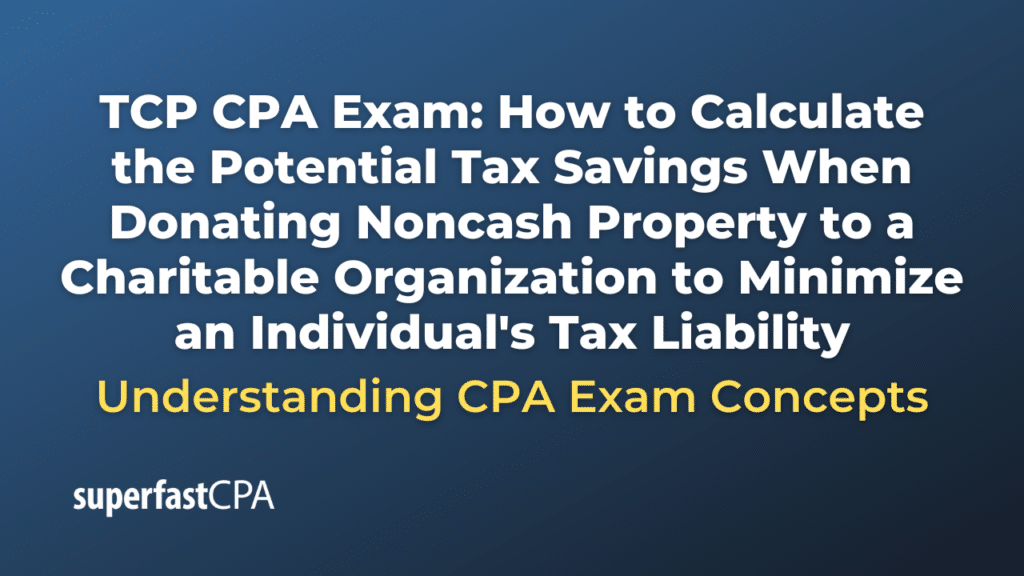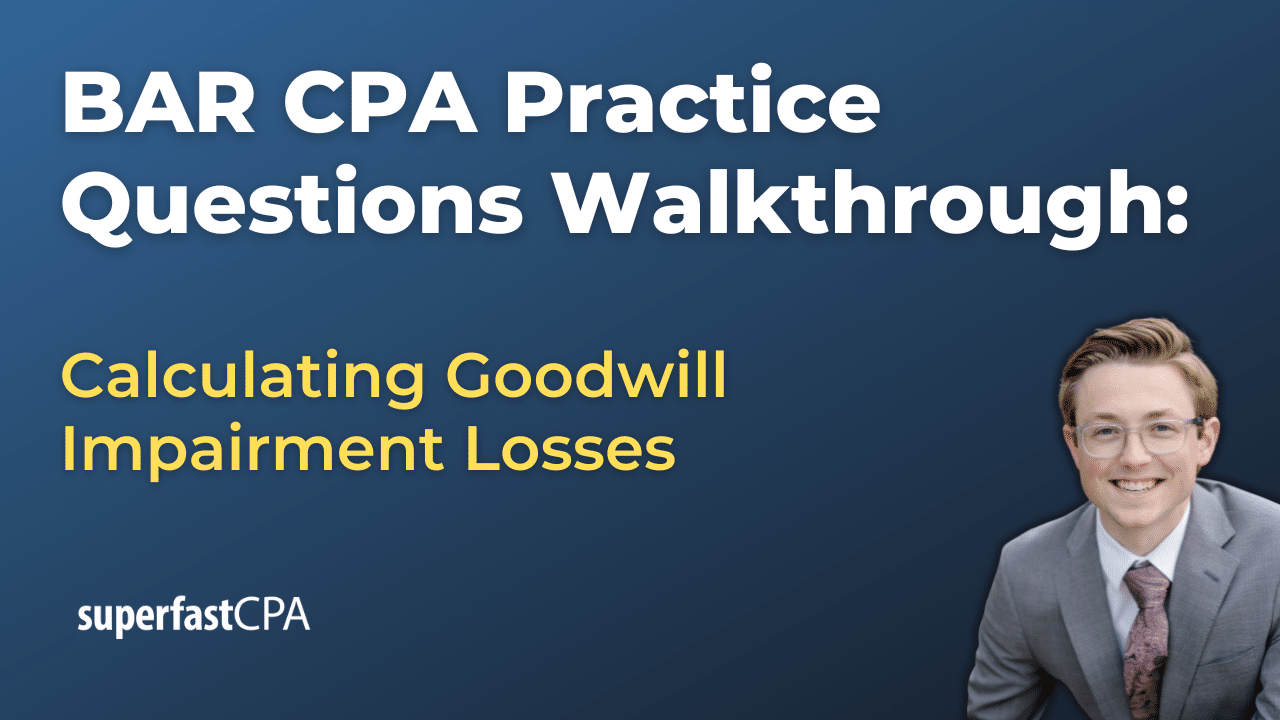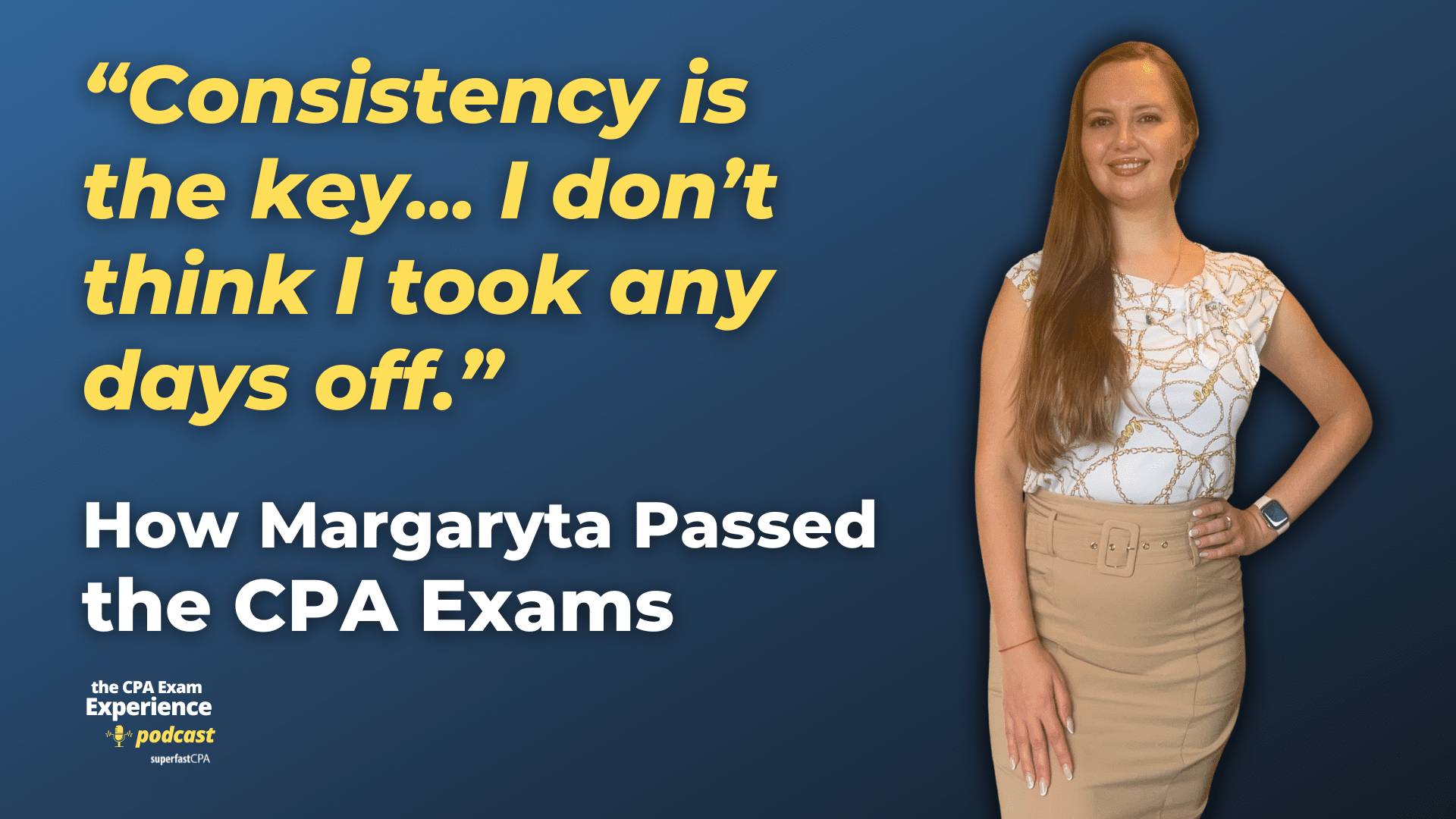Introduction
Overview of the Tax Benefits of Donating Noncash Property to a Charitable Organization
In this article, we’ll cover how to calculate the potential tax savings when donating noncash property to a charitable organization to minimize an Individual’s tax liability. Donating noncash property to a qualified charitable organization can provide significant tax benefits to individuals. When a taxpayer contributes noncash property, such as stocks, real estate, or personal items, they are generally eligible to deduct the fair market value (FMV) of the donated property on their tax return. This can reduce taxable income, resulting in substantial tax savings. Additionally, when donating appreciated assets, individuals avoid paying capital gains tax that would otherwise apply if the asset were sold before making the donation.
These tax benefits make noncash property donations a valuable tool in charitable giving strategies. The ability to claim deductions for the FMV of the property, combined with the potential to bypass capital gains tax, can lead to a meaningful reduction in a taxpayer’s overall liability.
Importance of Selecting the Right Property to Maximize Tax Savings and Minimize Current-Year Tax Liability
Not all donations of noncash property yield the same tax benefits, and the choice of which property to donate can have a significant impact on a taxpayer’s current-year tax liability. It is essential to select property that maximizes the available deduction and avoids unnecessary taxes. For example, donating property that has appreciated in value and has been held for more than one year typically allows the donor to deduct the FMV of the property while bypassing capital gains tax. In contrast, donating property that has decreased in value may require a different approach, such as selling the asset and donating the cash proceeds.
By carefully choosing the right assets to donate, taxpayers can maximize their charitable contribution deductions and minimize their taxable income for the year. This requires thoughtful planning and an understanding of the tax implications of different types of noncash donations.
Purpose of the Article: Guiding Individuals on How to Calculate Potential Tax Savings and Plan Effectively
The purpose of this article is to provide individuals with the knowledge they need to calculate potential tax savings when donating noncash property to a charitable organization. By explaining the relevant tax rules, providing examples of different types of property donations, and guiding taxpayers through the process of identifying the most beneficial assets to donate, this article aims to equip readers with the tools necessary to reduce their current-year tax liability effectively.
Whether the goal is to make a significant charitable contribution or to optimize the tax benefits of a planned donation, understanding how to calculate tax savings from noncash property donations can enhance both the philanthropic impact and the financial outcome.
Understanding the Tax Rules for Charitable Contributions
Definition of a Qualified Charitable Organization
A qualified charitable organization is one that is recognized by the IRS as eligible to receive tax-deductible contributions. These organizations typically include public charities, such as religious, educational, scientific, and literary institutions, as well as some private foundations. To confirm whether a charitable organization qualifies, taxpayers can consult the IRS’s online database of exempt organizations, known as the “Tax Exempt Organization Search” tool. Donations to organizations that are not qualified by the IRS do not provide tax-deductible benefits, even if they are nonprofit entities.
Overview of IRS Rules Governing Noncash Property Donations
The IRS has established several rules that dictate how noncash property donations are treated for tax purposes. These rules determine how much of the donation can be deducted and what factors, such as the type of property and its holding period, affect the value of the deduction. Understanding these regulations is critical for taxpayers seeking to maximize the tax benefits of their contributions.
Fair Market Value (FMV) vs. Adjusted Basis for Property
When donating noncash property to a charitable organization, the deductible amount is typically based on the property’s fair market value (FMV) or its adjusted basis, depending on the type of property and its holding period.
- Fair Market Value (FMV): This refers to the price the property would sell for on the open market. For appreciated property held for more than one year (long-term capital gain property), taxpayers can generally deduct the FMV of the asset at the time of the donation.
- Adjusted Basis: This is the original cost of the property, adjusted for factors such as depreciation or improvements. If the donated property has appreciated and was held for less than one year (short-term gain property), or if it is personal property unrelated to the charity’s mission, the taxpayer is typically limited to deducting the adjusted basis rather than FMV.
General Deduction Limits (50%, 30%, 20% of AGI Rules)
The amount a taxpayer can deduct for charitable contributions of noncash property is subject to certain limitations based on their adjusted gross income (AGI). These limits vary depending on the type of property donated and the nature of the charitable organization receiving the donation.
- 50% of AGI Limit: Donations of cash or noncash property to public charities are generally deductible up to 50% of a taxpayer’s AGI.
- 30% of AGI Limit: Donations of long-term capital gain property (such as appreciated stocks or real estate) to public charities are limited to 30% of the taxpayer’s AGI.
- 20% of AGI Limit: Donations of long-term capital gain property to private foundations are limited to 20% of the taxpayer’s AGI.
If a taxpayer’s total charitable contributions exceed these AGI limits, they can carry over the excess deductions for up to five subsequent tax years.
Noncash Property Categories: Real Estate, Stocks, Personal Property (Art, Antiques, etc.) and How They’re Treated for Tax Purposes
Noncash property contributions can take many forms, and each type of property is treated differently for tax purposes. Below are the primary categories of noncash property donations and how they are handled in terms of deductibility:
- Real Estate: Donating real estate can provide significant tax benefits, especially if the property has appreciated in value. If the real estate has been held for more than one year, taxpayers can typically deduct the FMV of the property and avoid paying capital gains tax on the appreciation. However, real estate must be appraised, and donations valued at over $5,000 require a qualified appraisal.
- Stocks: Donating appreciated stocks or other securities that have been held for more than a year allows taxpayers to deduct the FMV and avoid capital gains tax. This makes stock donations one of the most tax-efficient ways to contribute to a charity. For stock donations exceeding $500, the taxpayer must file IRS Form 8283.
- Personal Property (Art, Antiques, Collectibles): The deductibility of personal property depends on whether the item is related to the charitable organization’s mission. For example, donating a valuable painting to a museum might allow the donor to deduct the FMV. However, if the property is unrelated to the charity’s mission, the deduction may be limited to the property’s adjusted basis. Additionally, personal property donations over $5,000 require a qualified appraisal.
Understanding how different types of noncash property are treated for tax purposes helps taxpayers optimize their donations to achieve maximum tax savings.
Identifying the Property to Donate
Selecting the right noncash property to donate is a key strategy in maximizing tax savings and minimizing current-year tax liability. The type of property and its holding period significantly affect the amount of the charitable deduction and potential capital gains tax avoided. By understanding which assets offer the most favorable tax treatment, individuals can make more informed decisions about their charitable giving.
Determining Which Noncash Property Has the Most Favorable Tax Treatment
Long-Term Capital Gain Property (Held Over a Year) vs. Short-Term Property (Held for One Year or Less)
When determining the tax treatment of donated property, one of the most important factors is how long the asset has been held by the taxpayer. The IRS distinguishes between long-term capital gain property, which is held for more than one year, and short-term property, which is held for one year or less.
- Long-Term Capital Gain Property: Assets held for more than one year are considered long-term capital gain property. When these appreciated assets are donated to a qualified charitable organization, taxpayers can typically deduct the fair market value (FMV) of the property. This provides two key benefits: avoiding capital gains tax on the appreciation and claiming a deduction for the full FMV, which can substantially reduce taxable income.
- Short-Term Property: Property held for one year or less is classified as short-term property. If a taxpayer donates a short-term asset that has appreciated, the deduction is limited to the lesser of the property’s FMV or its adjusted basis (original cost). As a result, short-term property donations may not provide as significant a tax benefit compared to long-term capital gain property.
Appreciated Property: Donating Appreciated Assets to Avoid Capital Gains Tax
Donating appreciated property, such as stocks, real estate, or other investments, offers one of the most tax-efficient ways to support a charitable organization. By donating these assets, taxpayers can bypass the capital gains tax that would otherwise be incurred if the asset were sold.
For example, if a taxpayer owns stock that has significantly appreciated in value and has held it for more than a year, donating the stock allows the taxpayer to avoid paying capital gains tax on the appreciation. Additionally, the taxpayer can claim a charitable deduction for the FMV of the stock, effectively reducing their taxable income by the full value of the donation. This strategy is particularly beneficial for high-income individuals, as it offers dual tax advantages: capital gains avoidance and a substantial charitable deduction.
Depreciated Property: Sell and Donate Cash for Maximum Benefit
If the property being considered for donation has depreciated in value (i.e., the current market value is less than the original purchase price), donating the property may not yield the best tax outcome. In this case, it is often more advantageous to sell the depreciated property and donate the cash proceeds instead.
Selling the property allows the taxpayer to realize a capital loss, which can offset other capital gains or, if eligible, reduce taxable income up to certain limits. The taxpayer can then donate the cash proceeds from the sale to a charitable organization, allowing them to claim a charitable deduction for the amount donated. This approach maximizes tax benefits by utilizing the capital loss while still benefiting from a charitable contribution deduction.
By carefully evaluating the tax treatment of each asset, taxpayers can make strategic decisions about which property to donate to maximize tax savings and minimize current-year tax liability.
Case Studies/Examples of Common Property Types
To better understand how donating different types of noncash property can impact tax savings, it’s helpful to examine specific examples. Below are case studies that demonstrate the tax implications and benefits of donating appreciated stock, real estate, and personal items such as art or collectibles.
Example: Donating Appreciated Stock
Scenario:
Sarah purchased 100 shares of stock in a publicly traded company five years ago for $10,000. The stock has since appreciated and is now worth $25,000. Sarah is in the 35% tax bracket and is considering donating the stock to a qualified charitable organization.
Tax Benefits:
By donating the stock, Sarah can avoid paying capital gains tax on the $15,000 appreciation. If she sold the stock, she would owe a 15% long-term capital gains tax on the $15,000 gain, which would result in $2,250 in taxes. Instead, by donating the stock directly, Sarah avoids this tax liability.
In addition to avoiding capital gains tax, Sarah is eligible to claim a charitable deduction for the full fair market value of the stock, which is $25,000. Assuming Sarah is subject to a 35% tax rate, the charitable deduction could reduce her taxable income by $25,000, resulting in tax savings of $8,750 (35% of $25,000).
Summary:
- Capital gains tax avoided: $2,250
- Charitable deduction: $25,000
- Tax savings from deduction: $8,750
- Total tax savings: $11,000
Example: Donating Real Estate
Scenario:
John owns a rental property that he purchased 15 years ago for $150,000, and its current market value is $300,000. John wants to donate the property to a local charity that builds affordable housing, and the property has appreciated significantly in value. He has also taken $30,000 in depreciation deductions on the property over the years.
Tax Benefits:
Since the real estate is a long-term capital gain asset (held for more than a year), John can deduct the fair market value of the property, which is $300,000, as long as the donation is made to a qualified charitable organization. By donating the property directly, John avoids paying capital gains tax on the $150,000 appreciation.
Additionally, if John had sold the property instead, he would have been required to recapture the $30,000 in depreciation as ordinary income and pay taxes on that amount. By donating the property, John avoids this depreciation recapture as well.
The charitable deduction for the FMV of the property would be limited to 30% of John’s adjusted gross income (AGI) in the current year, with the ability to carry forward any unused deduction for up to five years. Assuming John is in the 37% tax bracket, a $300,000 deduction could result in tax savings of $111,000.
Summary:
- Capital gains tax avoided: $22,500 (15% of $150,000 appreciation)
- Depreciation recapture avoided: Tax on $30,000
- Charitable deduction: $300,000
- Tax savings from deduction: $111,000
- Total tax savings: Over $133,500 (depending on John’s AGI)
Example: Donating Personal Items Like Art or Collectibles
Scenario:
Emily has a painting that she purchased for $5,000 ten years ago, and its current fair market value is $50,000. She wants to donate the painting to an art museum that is a qualified charitable organization.
Tax Benefits:
Since the painting is considered a long-term capital gain property, Emily can deduct the fair market value of the painting if it is related to the museum’s charitable mission (i.e., the museum will display or use the painting as part of its collection). If Emily donates the painting, she can avoid paying capital gains tax on the $45,000 appreciation.
Additionally, Emily can claim a charitable deduction for the painting’s FMV of $50,000. Assuming she is in the 35% tax bracket, the deduction could result in tax savings of $17,500.
However, if the painting were unrelated to the museum’s mission (e.g., if the museum plans to sell the painting), Emily’s deduction would be limited to the adjusted basis of the property, which is $5,000, rather than the FMV.
Summary:
- Capital gains tax avoided: $6,750 (15% of $45,000)
- Charitable deduction: $50,000
- Tax savings from deduction: $17,500
- Total tax savings: $24,250 (if the painting is related to the museum’s mission)
These case studies highlight the tax benefits of donating appreciated property and demonstrate how selecting the right property can maximize tax savings. Whether donating appreciated stock, real estate, or personal items, taxpayers should consider the holding period, potential capital gains, and the organization’s use of the property when planning their charitable contributions.
Calculating the Potential Tax Savings
When donating noncash property to a charitable organization, understanding the potential tax savings is key to maximizing the benefits of your contribution. This section walks through the step-by-step process for calculating tax savings from such donations and compares the outcomes of donating different types of property.
Step-by-Step Process of Calculating Potential Tax Savings
1. Determine FMV and Adjusted Basis of the Property
The first step in calculating tax savings is identifying the fair market value (FMV) and adjusted basis of the property being donated.
- Fair Market Value (FMV): This is the estimated price the property would sell for on the open market.
- Adjusted Basis: This is generally the original purchase price of the property, adjusted for any depreciation or improvements.
For example, if you purchased a stock for $10,000, and its current market value is $25,000, the FMV is $25,000, and the adjusted basis is $10,000.
2. Calculate Capital Gains Avoided by Donating Instead of Selling
Next, calculate the capital gains that would have been realized if the property were sold instead of donated. By donating the property, you avoid paying capital gains tax on the appreciation of the asset.
Formula:
Capital Gains Avoided = FMV – Adjusted Basis
For example, if the FMV of a stock is $25,000 and the adjusted basis is $10,000, the appreciation (capital gain) is $15,000. Donating the stock instead of selling it allows you to avoid paying capital gains tax on the $15,000 gain.
3. Apply the AGI Limitation for Charitable Contributions
The amount of your charitable deduction is generally limited to a percentage of your adjusted gross income (AGI). The applicable percentage depends on the type of property and the type of charity.
- Cash Donations: Limited to 60% of AGI.
- Noncash Property (e.g., appreciated stocks or real estate): Typically limited to 30% of AGI.
- Donations to Private Foundations: Limited to 20% of AGI.
Any excess deduction can be carried forward for up to five years.
4. Deductibility Rules for Different Types of Property (Stocks, Real Estate, etc.)
The deductibility of donated property depends on whether the property is classified as long-term capital gain property or short-term property. For long-term capital gain property (held for more than one year), the deduction is typically equal to the FMV of the asset. For short-term property, or property that has depreciated in value, the deduction is limited to the lesser of FMV or the adjusted basis.
- Stocks: Donating appreciated stocks held for more than one year allows you to deduct the FMV and avoid capital gains tax.
- Real Estate: If the real estate is long-term property, you can deduct the FMV and avoid both capital gains tax and depreciation recapture.
- Personal Property (e.g., art): If the property is related to the charity’s mission, you can deduct the FMV. Otherwise, the deduction is limited to the adjusted basis.
5. Determine Tax Savings from the Charitable Deduction
To calculate the actual tax savings from the charitable deduction, multiply the amount of the deduction by your federal income tax rate. This gives you the reduction in your taxable income.
Formula:
Tax Savings = Deduction Amount x Federal Tax Rate
Federal Income Tax Rate Impact
The tax savings depend on your marginal federal income tax rate. For example, if you are in the 35% tax bracket and donate property worth $50,000, the potential tax savings from the charitable deduction would be:
Tax Savings = 50,000 x 0.35 = 17,500
Example Scenarios with Numbers
Example 1: Donating Appreciated Stock
- FMV of stock: $25,000
- Adjusted basis: $10,000
- Capital gains avoided: $15,000
- Federal tax savings (assuming a 35% tax rate): $25,000 deduction × 35% = $8,750
- Total tax benefit: $8,750 in tax savings + capital gains tax avoided ($2,250) = $11,000
Example 2: Donating Real Estate
- FMV of real estate: $300,000
- Adjusted basis: $150,000
- Capital gains avoided: $150,000
- Federal tax savings (assuming a 37% tax rate): $300,000 deduction × 37% = $111,000
- Total tax benefit: $111,000 in tax savings + capital gains tax avoided ($22,500) = $133,500
Comparison of Donating Different Types of Property and the Respective Tax Outcomes
Let’s compare donating different types of property in terms of their tax outcomes:
| Type of Property | Fair Market Value (FMV) | Adjusted Basis | Capital Gains Avoided | Deduction Amount | Total Tax Savings |
|---|---|---|---|---|---|
| Appreciated Stock | $25,000 | $10,000 | $15,000 | $25,000 | $11,000 |
| Real Estate | $300,000 | $150,000 | $150,000 | $300,000 | $133,500 |
| Personal Property (Art) | $50,000 | $5,000 | $45,000 | $50,000 | $24,250 |
Donating appreciated stock, real estate, or personal property like art offers substantial tax benefits. By selecting the right type of property and understanding its tax treatment, individuals can maximize their charitable contribution deductions and overall tax savings.
Considerations for Maximizing Tax Benefits
Maximizing the tax benefits of charitable donations requires careful planning, particularly for high-income individuals who may be subject to various tax limitations and opportunities. By strategically timing donations, leveraging advanced giving strategies, and utilizing donor-advised funds, taxpayers can enhance the financial advantages of their charitable contributions.
Planning Strategies for High-Income Individuals
For high-income individuals, maximizing tax savings often involves thoughtful timing and structuring of charitable donations. These strategies can help reduce taxable income more effectively and ensure that deductions are optimized for the current tax year or carried forward into future years.
Timing of the Donation to Maximize Deductions (Year-End vs. Future Years)
The timing of charitable donations can have a significant impact on the taxpayer’s ability to claim deductions. For individuals in higher tax brackets, it may be beneficial to donate in years when income is expected to be higher. This maximizes the value of the charitable deduction, as the deduction can offset income taxed at a higher rate.
- Year-End Donations: Making donations at the end of the year can provide immediate tax benefits. Year-end donations allow taxpayers to apply the deduction against income earned in the current year, reducing their taxable income before the close of the tax year.
- Future-Year Donations: If taxpayers anticipate higher income in future years, they may choose to delay donations to maximize the value of their deduction. This is especially useful if the taxpayer expects to move into a higher tax bracket. By timing the donation to coincide with a higher-earning year, the taxpayer can reduce their taxable income when it matters most.
Bundling Donations to Exceed the Standard Deduction Threshold (Bunching Strategy)
One effective strategy for maximizing deductions is “bunching” charitable contributions. The bunching strategy involves combining multiple years’ worth of donations into a single tax year to exceed the standard deduction threshold, allowing taxpayers to itemize and claim charitable deductions in that year.
- How It Works: Instead of donating smaller amounts annually, a taxpayer may choose to make a large donation in one year, surpassing the standard deduction. In the following years, the taxpayer can take the standard deduction again, thereby increasing total tax savings over time.
- Example: In 2024, the standard deduction for a single filer is $13,850. If a taxpayer’s typical annual donations amount to $10,000, they may not benefit from itemizing. However, if they bundle three years’ worth of donations ($30,000) into one tax year, they can itemize in that year and potentially save more on taxes. In subsequent years, they revert to taking the standard deduction.
Donor-Advised Funds and Other Methods to Manage Contributions Efficiently
Another powerful tool for high-income individuals to manage their charitable giving is a donor-advised fund (DAF). DAFs allow donors to contribute assets, receive an immediate tax deduction, and then distribute the funds to charities over time. This provides flexibility in both the timing of the contribution and the eventual distribution to charitable organizations.
Donor-Advised Funds (DAFs)
- How DAFs Work: A donor contributes to a DAF, which is managed by a sponsoring organization (such as a financial institution or a public charity). The donor receives a tax deduction in the year the contribution is made, even if the funds are not distributed to charities until a later date.
- Advantages: DAFs provide flexibility in charitable giving, as donors can time their contributions to maximize tax benefits while still retaining control over how and when the funds are distributed. Additionally, DAFs allow for the donation of appreciated assets, which can further enhance tax savings by avoiding capital gains taxes.
- Example: A high-income individual expecting a significant taxable event (such as the sale of a business or a large bonus) can contribute a large sum to a DAF in the current year to offset that income. The funds can then be distributed to charitable organizations over several years, aligning with the donor’s philanthropic goals while securing immediate tax benefits.
Other Methods to Manage Contributions Efficiently
- Qualified Charitable Distributions (QCDs): Taxpayers over age 70½ can donate up to $100,000 per year directly from their Individual Retirement Account (IRA) to a qualified charity. This donation can satisfy required minimum distributions (RMDs) without increasing taxable income.
- Private Foundations: High-net-worth individuals may also establish private foundations as a vehicle for charitable giving. While private foundations offer greater control over how donations are managed, they are subject to more stringent regulations and higher administrative costs compared to donor-advised funds.
By employing thoughtful planning strategies, such as timing donations for optimal tax impact, utilizing the bunching strategy to exceed the standard deduction, and leveraging donor-advised funds or other giving vehicles, high-income individuals can maximize their tax benefits while supporting charitable causes. These approaches provide flexibility, tax efficiency, and the ability to align charitable contributions with broader financial and philanthropic goals.
Tax Reporting Requirements
When donating noncash property to a charitable organization, it is essential to comply with the IRS’s tax reporting requirements to ensure that deductions are properly claimed and substantiated. Failure to follow these rules can result in denied deductions or penalties. Below are the key tax reporting requirements, including IRS Form 8283, appraisals, and recordkeeping rules.
IRS Form 8283 for Noncash Charitable Contributions
For noncash charitable contributions exceeding $500 in value, taxpayers must complete and attach IRS Form 8283 to their tax return. This form provides detailed information about the donated property, including its description, fair market value (FMV), and how the FMV was determined.
- Part I of Form 8283: Used for donations of property with a total value between $500 and $5,000. Taxpayers need to describe the property and explain how the FMV was calculated.
- Part II of Form 8283: Required for donations of property exceeding $5,000. In addition to describing the property, this section requires a qualified appraisal (explained below) and the signature of the appraiser. The charitable organization receiving the donation must also sign to acknowledge receipt.
It’s important to note that Form 8283 must be submitted with the tax return for the year the donation was made, and failure to include this form can result in disallowed deductions.
Required Appraisals for Property Over Certain Thresholds
When donating noncash property valued at more than $5,000, the IRS requires that the taxpayer obtain a qualified appraisal to substantiate the fair market value of the property. This appraisal must be completed by a qualified, independent appraiser and must meet the following requirements:
- Qualified Appraiser: The appraiser must have specific training, education, and experience in valuing the type of property being donated. The appraiser cannot have any financial interest in the property or the charitable organization.
- Appraisal Timing: The appraisal must be conducted no earlier than 60 days before the donation date and must be included with the tax return for the year the donation is made.
- Appraisal Report: The report should include detailed information about the property, such as its condition, value, and the method used to determine FMV. The appraiser’s signature and certification that the appraisal complies with IRS regulations must also be included.
Some exceptions to the appraisal requirement exist. For example, publicly traded securities do not require an appraisal, regardless of value, because their market value is readily available.
Recordkeeping and Substantiation Rules
In addition to filing Form 8283 and obtaining appraisals when necessary, taxpayers must maintain adequate records to substantiate their noncash charitable contributions. These records are crucial in case of an IRS audit or inquiry.
- For Donations of Less Than $250: A written acknowledgment from the charitable organization is generally not required, but taxpayers should retain proof of the donation, such as a bank record, receipt, or documentation of the property’s value.
- For Donations of $250 or More: Taxpayers must obtain a written acknowledgment from the charity. The acknowledgment must include:
- A description of the donated property (but not its value).
- A statement that no goods or services were provided in exchange for the donation, or if any were, a description and estimate of their value.
- For Donations Exceeding $5,000: Along with the requirements listed above, taxpayers must maintain the qualified appraisal and any related documentation of how the FMV was determined.
- Timing of Substantiation: The acknowledgment and records should be obtained before the tax return is filed for the year in which the donation is made. Failure to substantiate the donation by the time of filing could result in a denial of the deduction.
Meeting the IRS’s tax reporting and substantiation requirements is essential for successfully claiming deductions on noncash charitable contributions. By filing IRS Form 8283, obtaining necessary appraisals, and adhering to recordkeeping rules, taxpayers can ensure that their charitable deductions are well-supported and protected from potential IRS challenges.
Potential Pitfalls to Avoid
While donating noncash property to a charitable organization can provide substantial tax benefits, there are several potential pitfalls that taxpayers must be mindful of to avoid complications or disallowed deductions. Below are key issues to be aware of when making noncash charitable contributions.
Overvaluing the Property: IRS Scrutiny of High FMV Claims
One of the most common mistakes in noncash charitable donations is overvaluing the donated property. The IRS closely scrutinizes charitable deductions for noncash property, especially when the fair market value (FMV) claimed is significantly higher than expected. Inflating the value of the property can lead to the IRS rejecting the deduction, imposing penalties, or triggering an audit.
- FMV Determination: It’s essential to determine FMV based on objective factors, such as recent sales of comparable property or independent appraisals. Overstating the value, especially without supporting documentation, increases the risk of IRS scrutiny.
- Appraisal Requirements: For property valued at more than $5,000, a qualified appraisal is mandatory to substantiate the claimed value. Be sure the appraisal meets IRS standards, as failure to provide an adequate appraisal can result in the denial of the deduction.
- Penalties for Overvaluation: If the IRS determines that the property’s value has been grossly overstated, taxpayers may face penalties. The penalty for substantial overvaluation can be 20% or more of the underpayment of tax resulting from the inflated deduction.
Donations to Non-Qualified Organizations
Not all charitable organizations are qualified to receive tax-deductible contributions. Donations made to non-qualified organizations do not provide tax benefits, even if the organization operates on a nonprofit basis.
- IRS Qualified Charitable Organizations: To ensure that a donation is eligible for a tax deduction, it must be made to an organization recognized by the IRS as a qualified charitable organization. Examples include public charities, religious institutions, educational institutions, and certain private foundations.
- Confirming Eligibility: Before donating, taxpayers can check whether the organization qualifies by using the IRS’s Tax Exempt Organization Search tool, which provides a list of all qualified organizations. Donations to foreign organizations, social clubs, political organizations, or for-profit entities are generally not deductible.
- Consequences of Donating to Non-Qualified Organizations: If a taxpayer donates to a non-qualified organization and claims a deduction, the IRS may disallow the deduction, resulting in additional tax owed and potential penalties.
Donating Property with Restrictions that Limit Its Value
When donating noncash property, the value of the donation can be diminished if restrictions are placed on how the charity can use or sell the property. Such restrictions may reduce the FMV of the property for tax deduction purposes, as they limit the benefit the charity receives from the donation.
- Types of Restrictions: Restrictions may include conditions such as the charity not being allowed to sell the property for a certain period, requiring the property to be used in a specific way, or requiring the charity to maintain the property rather than liquidate it. These conditions can reduce the property’s FMV because they limit its marketability.
- Impact on Tax Deduction: If the property is donated with significant restrictions, the IRS may require the deduction to be based on the property’s lower restricted value rather than its unrestricted FMV. This can substantially reduce the tax benefit from the donation.
- Example: If a taxpayer donates a valuable piece of art to a museum but stipulates that it cannot be sold for at least 10 years, the value of the art may be reduced because the restriction limits the museum’s ability to raise funds by selling it. As a result, the deduction may be limited to a lower value than the FMV of the unrestricted art.
To maximize the tax benefits of donating noncash property while avoiding potential pitfalls, taxpayers must ensure accurate valuation, confirm the organization’s tax-exempt status, and avoid placing unnecessary restrictions on the donated property. By adhering to IRS guidelines and carefully planning the donation, taxpayers can prevent issues that may lead to disallowed deductions or penalties.
Conclusion
Summary of Key Points for Maximizing Tax Savings Through Noncash Property Donations
Donating noncash property to charitable organizations can offer substantial tax benefits, but careful planning and adherence to IRS rules are essential for maximizing these savings. Here are the key points to keep in mind:
- Choose the Right Property: Long-term capital gain property, such as appreciated stock or real estate, generally offers the most favorable tax treatment. Donating such assets allows you to avoid capital gains tax and claim a deduction based on fair market value (FMV).
- Understand Tax Deduction Limits: The amount of the deduction is subject to limitations based on adjusted gross income (AGI). Donations of noncash property are typically limited to 30% of AGI, while cash donations may be deducted up to 60% of AGI.
- Comply with IRS Requirements: Filing IRS Form 8283 for donations exceeding $500 and obtaining a qualified appraisal for property over $5,000 are crucial for substantiating deductions. Proper recordkeeping and substantiation are necessary to avoid penalties or disallowed deductions.
- Avoid Common Pitfalls: Overvaluing the property, donating to non-qualified organizations, or placing restrictions on the donated property can lead to IRS scrutiny or reduced tax benefits. Avoid these mistakes to maximize the value of your contribution.
Final Thoughts on Planning Strategies to Minimize Current-Year Tax Liability While Supporting Charitable Organizations
Effective tax planning is key to optimizing the benefits of noncash charitable contributions. High-income individuals should consider strategies such as timing donations to maximize deductions in high-income years and bundling contributions to exceed the standard deduction threshold. Using vehicles like donor-advised funds (DAFs) provides flexibility in managing contributions while securing immediate tax benefits.
By selecting the right property to donate, carefully following IRS rules, and leveraging advanced giving strategies, taxpayers can minimize their current-year tax liability while making meaningful contributions to the causes they care about. Thoughtful planning ensures that charitable giving aligns not only with philanthropic goals but also with financial objectives, resulting in a win-win for both the donor and the charity.












